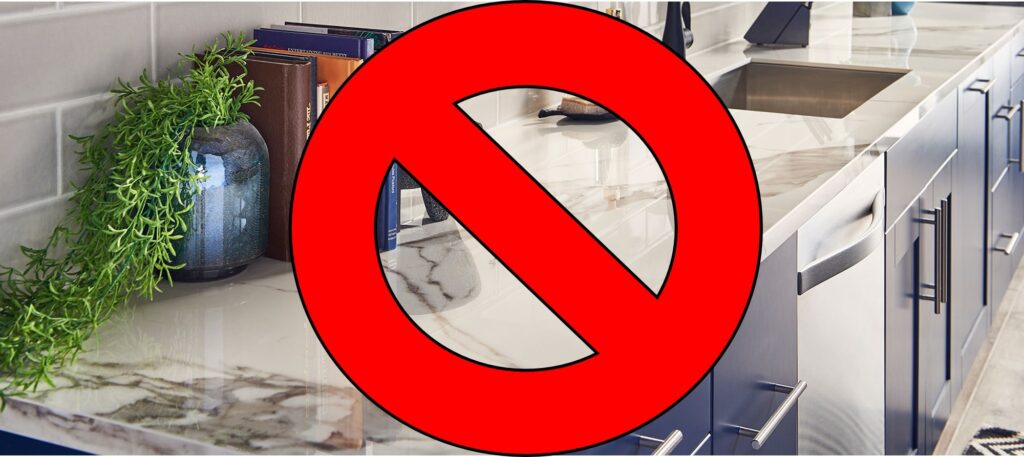If you travel in Europe, you are sure to have encountered many porcelain countertops, as the surface has been used there for many years. But the trend has just recently traveled across the pond. And while there are many nice features, such as the stain resistance and heat resistance of the porcelain countertop, there are also a few more significant downfalls that we believe far outweigh any benefits it brings to the table.
What Is Porcelain?
If you are familiar with various clay-type dishware, figurines, or high-end dolls, you know that porcelain is a clay-based material. Once fired in a kiln at a very high temperature, the finished product is ultra-dense and relatively durable. It is also noticeably lighter weight than a typical piece of fired clay or other ceramic material. In addition, pigments can be used to color the finished product and add patterns to the surface of the porcelain.
The Drawbacks Of Porcelain Countertops
Unfortunately, many homeowners are not willing to overlook many drawbacks when purchasing a new high-end countertop. Some of the most concerning include:
- No Blunt Force Resistance – While the surface is hard, it is also prone to chipping, cracking, and scratching when faced with blunt force. Dropping a pot or pan on the surface could be disastrous.
- Lack Of Tinsel Strength – When the large, thin countertop sheets are installed, porcelain tends to be very fragile. The lightweight material is not easy to handle in larger pieces and can often crack, shatter, or chip during installation.
- Limited Edge Options – Because of porcelain’s composition, there are only two options for your new countertop edge, square or mitered. If you are interested in a more custom or rounded appearance, this material will not meet your needs.
- The Cost – On average, porcelain will cost about the same as quartz and slightly less than granite. But the durability is not comparable. In addition, the product is new enough to the U.S. market that there are no standards for longevity to compare to the 50 year maximum for both granite and quartz.
- Surface Appeal – Unfortunately, the patterns created on porcelain countertops are only on the product’s surface. So if it is ever damaged, there will be a noticeable visual difference in the countertop’s color, pattern, or texture.
- Lower ROI – As a new player in the world of high-end countertops in the United States, porcelain does not have the name recognition or appeal of granite or quartz. These are household names that every buyer will appreciate. You invest the same or nearly the same amount in a porcelain countertop, but it will not deliver the same return on your investment.
When you want the best for your home’s countertops, you call 612-270-4239 to speak to the Rock Solid Tops experts. And when you ask about our opinion of porcelain countertops, we will provide you with the facts you just read and many more when explaining why we cannot, in good conscience, recommend this surface to our valued clients.

